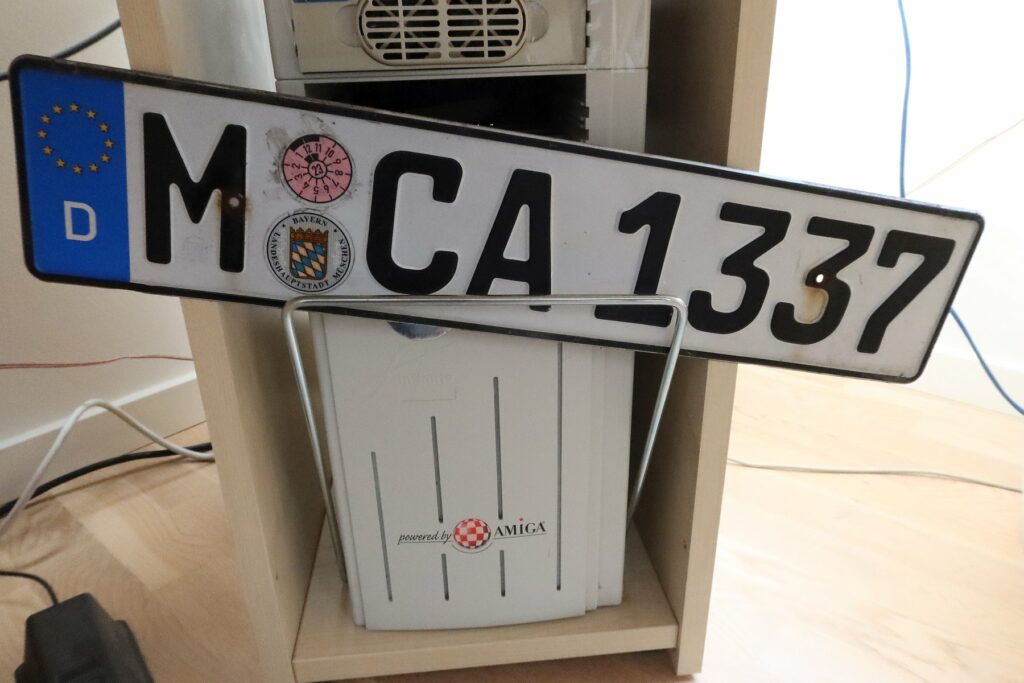According to the Swedish Rules(TM), one has to register his/her bil about a week after (permanently) entering the country. Which is a joke, really, because you can’t get anywhere without your personnummer or a Swedish bank account. Moreover, you can sail any shore in the EU for at least up to six months without changing registration.
But as time was ticking and it stopped raining, no longer turning my car into an aquarium, I figured I could go through the motions of registering my car here in Sweden. Little did I know that this would be complicated, but not that complicated at all.
So I filled out the application form for the Verification of Origin from Transport Styrelsen on the mid of February and sent it to them, together with my original vehicle papers (Zulassungsbescheinigung Teil 1 und 2), a copy of the bill when I bought the car in 2006 (as proof that the car has been legitimately bought over a year ago), a copy of my flat lease contract from Germany (as proof that I’ve been using the car more than a year in Germany) and a copy of the last Hauptuntersuchung. And no, I wouldn’t get any of these papers back. They keep them.
Usually, some kind of temporary insurance is required while the registration process is ongoing, but I figured I wouldn’t want to make things more complicated as necessary and come on, I do have my insurance from Germany, right?
Then I waited for them to get my papers and send me instructions how to pay the application (1100 SEK). After that was done, I needed to make an appointment at the Bilprovning, some kind of TÜV. Or so I thought. I clicked myself through the endless realms of telephone loops and computer voices before I was speaking to somebody at Besikta Bilprovning in Malmö, who told me that my application was not ready yet. It said that Transport Styrelsen had received my money, but not that they actually completed my application.
So I waited for another week, checking every day at the website, if my application had been processed.
And finally it was ready. On March, 10th, I took my chances and just drove up to the Besikta Bilprovning about 1.5km away. I parked my car and went into the building. There only was a computer screen where I should be entering my registration plate number or my case number. I had neither.
So I walked around the building and finally met some human staff member whom I explained to that I wanted to make an appointment for Verification of Origin testing. He was very kind and answered, they wouldn’t do that here, but I could call his colleague in Lomma, handing me his business card.
I went home, called him and made an appointment in Lomma. I immediately got a text message to my phone confirming the appointment, with a link, but the link didn’t work. Never mind.
I drove to Lomma on March, 16th, went inside, entered my case number and something showed up on the screen and disappeared again before I could read it with my limited Swedish language knowledge.
So I waited outside for things to happen.

About five minutes after my official appointment time, the cut-off case number with destroyed “Ä” letter replaced by a “?” showed up on a LED display, and I drove into door number 2.
The friendly staff person I talked to on the phone took and kept my documents (the original “Certificate of Conformity” that I actually should not need because my car was already registered in Germany, but who cares; and the original Hauptuntersuchung certificate). He then briefly looked at my car for about five minutes, writing down the VIN, looking at the chassis etc. And then disappeared for 30 minutes without a word. Seems whatever I had paid for at Transport Styrelsen, entering all the data for my car into their computer was not their job but his. I paid 2488 SEK for this service and drove home. I wonder how much I would have paid if he had examined my car in-depth. Next TÜV will probably be in around eleven months time — I’ll automatically get a letter.
Then I had to get a Swedish traffic insurance, which, like most stuff in Sweden, is split into two parts: the obligatory road insurance and the optional comprehensive insurance. This was a bit more difficult than I thought because I didn’t have a Swedish driver’s license, so the (price comparison) web portals didn’t work or spat out ridiculous fees. I had to write the companies by email for them to make me an offer.
In Sweden, a private car travels about 1,000 miles per year. Just if you’re wondering how people are covering their vast distances: one Swedish mile equals 10 km.
Unlike in Germany, these companies are not interested in the number of years you have been driving without damages (which is a pity, because I spent time on getting a letter stating my Schadensfreiheit rating). Instead, they will take the amount of years you have been driving. Probably because this information is electronically available — if you have Swedish driving license.
As my car is approaching its 16th birthday, I didn’t go for the comprehensive insurance, but just the mandatory road insurance (2844 SEK/year). Most of the benefits are lost with my car being so old anyway.
A couple of days later, I got an email from my old insurance company in Germany that my car had been deregistered (and no, I don’t want to continue that insurance, thanks). The new Swedish number plates (that are bound to the car itself, not to the owner — and unfortunately you cannot pick a custom number yourself) arrived at the supermarket where I fetched and mounted them.
I got the German taxes and insurance fee back and I paid another 319 SEK service fee and taxes in Sweden in return. And that’s that. Easy peasy.




